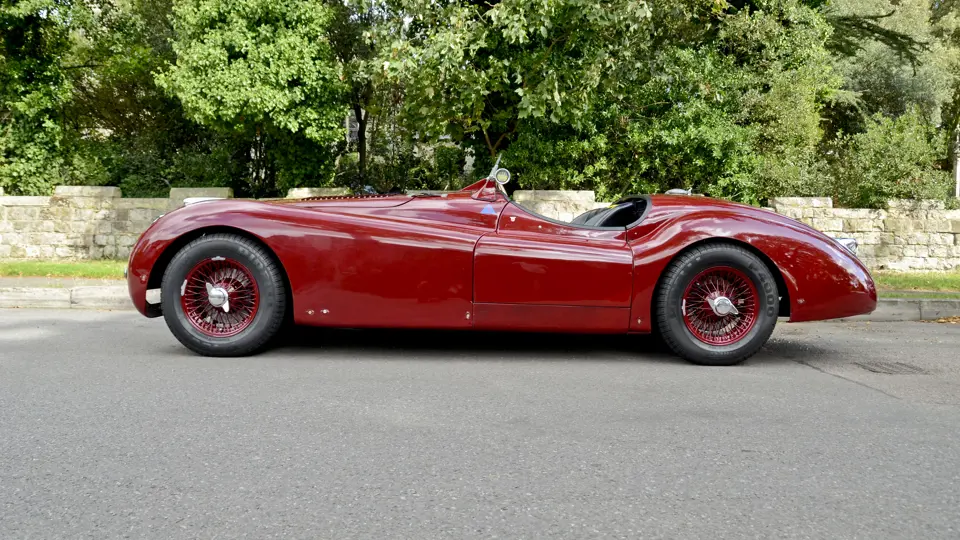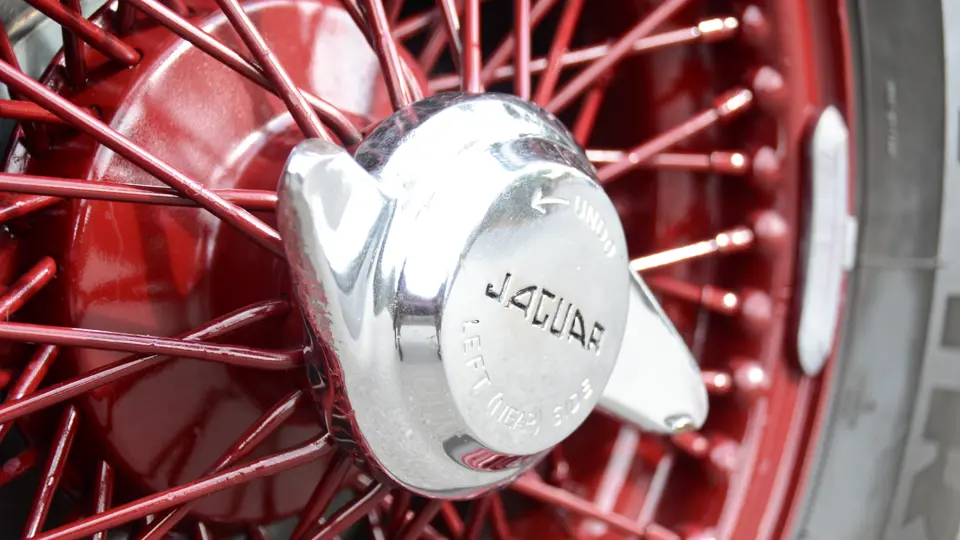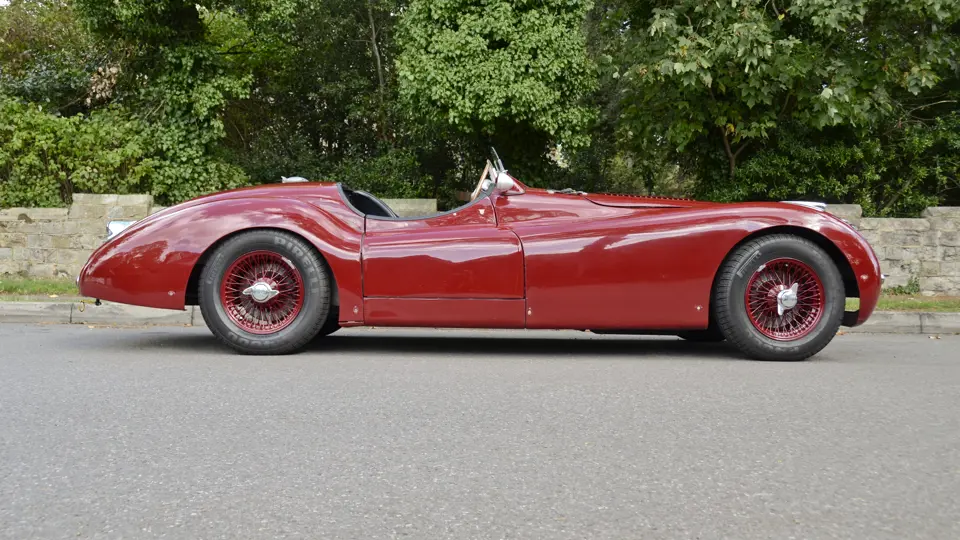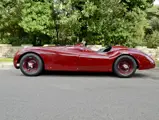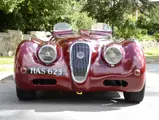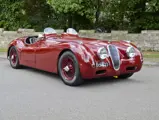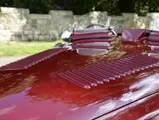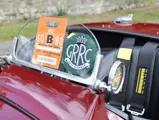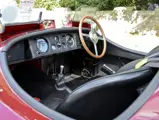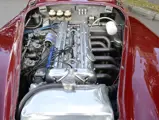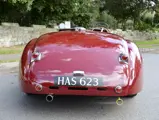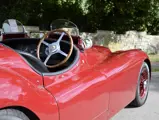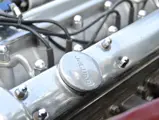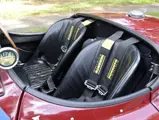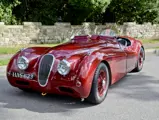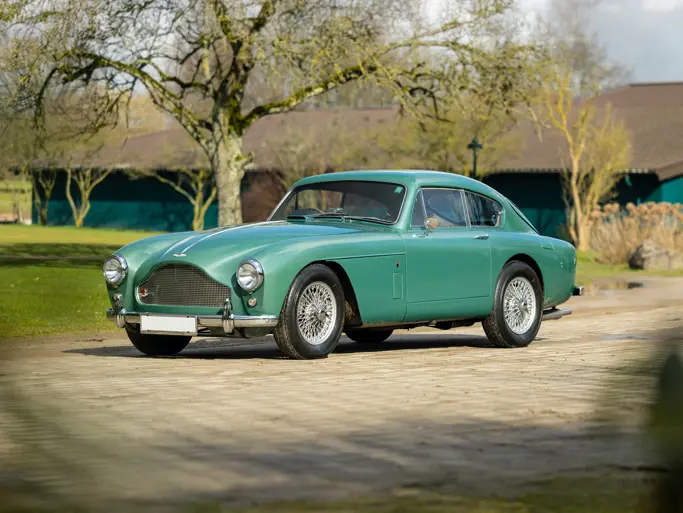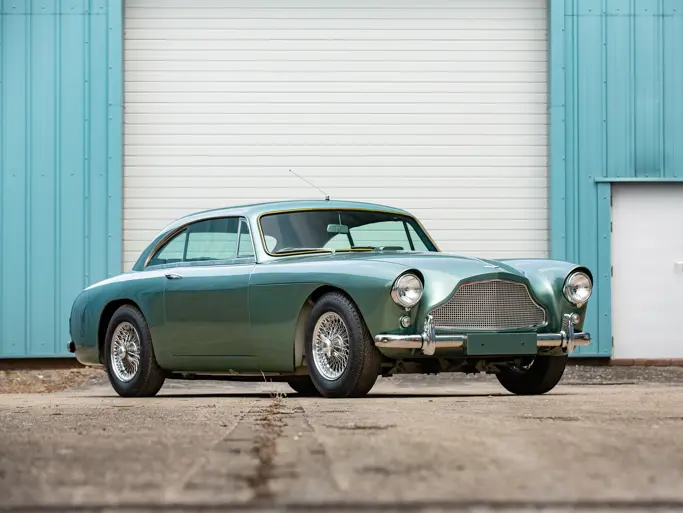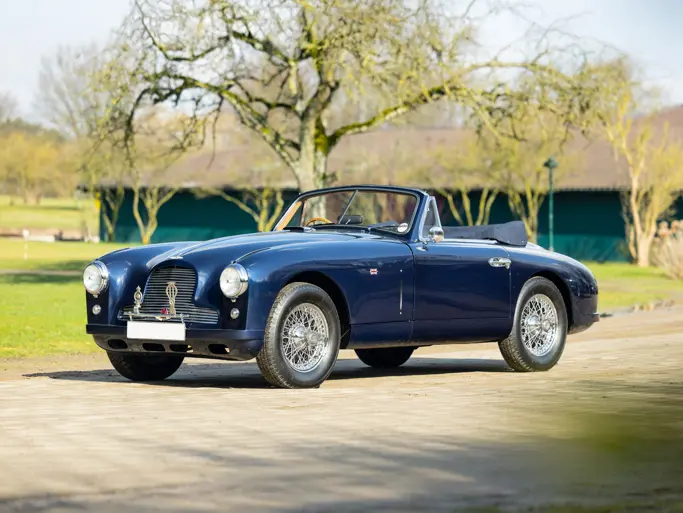300 bhp, 3,791 cc inline six-cylinder engine, five-speed Getrag gearbox, Jaguar Salisbury limited-slip differential, independent front suspension with custom fully adjustable shock absorbers, and four-wheel disc brakes. Wheelbase: 2,591 mm
• Alloy roadster in the style of the lightweight “LT2”
• Brighton Speed Trials, 2009
• 3.8-litre engine built by specialists with triple Weber carburettors
• Comprehensive history file
The XK120 proved particularly successful in competition, and in 1949 a virtually standard car achieved a speed of 126.594 miles per hour, proving the model designation “120” was no overstatement. Star American racing driver and eventual world driving champion Phil Hill successfully campaigned an alloy XK120 Roadster in 1950, concluding the season at the inaugural Pebble Beach Cup race of 5 November, 1950. Despite the loss of the car’s clutch and brakes, Hill still managed a first-place finish in a performance that truly defined his driving skill and the XK120’s competition prowess.
The Jaguar XK120 LT2 was a lightweight version of the road-going XK120 constructed purely for racing with a one-piece magnesium body. Indeed Jaguar built three versions of the LT series known as LT1, LT2 and LT3. The styling of the LT cars differed to that of the road-going bodies, and a close inspection reveals a fully de-seamed body and a small lightweight removable bonnet, which does not incorporate the grille unlike the road cars. The LT cars were prepared as a replacement for the C-Type, which looked like it wouldn’t be ready for the 1951 Le Mans. As it turned out, however, the C-Type was ready and went on to victory.
This XK120 was built on 23 November, 1950 and was supplied as a right-hand drive steel-bodied road car by H. Beart & Co., Kingston-On-Thames, Surrey, finished in silver with red leather interior. The car remained in Kingston-On-Thames for many years, owned by Mrs. Stanbury from whom it was acquired by a Jaguar enthusiast from Dorset in the late 1980s.
Sir John Chisholm acquired 660343 in 2000 from Kit Constable Maxwell, who had intended to build a hillclimb and sprint car using a tuned 3.8-litre engine. Sir John wanted to create a competitive race car for the XK series and instructed marque expert Aubrey Finburgh to construct a fully removable all-alloy body in the style of the works LT2 car, using eighteen-gauge half-hard aluminium, mated to the seam-welded chassis.
The engine is a tuned 3.8-litre unit that was built and subsequently developed by marque specialists Brian Stevens. Triple 45DCOE Weber carburettors are fitted with steel conrods, forged pistons and big valves. A lightweight alternator and high torque starter are fitted, as is an aluminium radiator, up-rated water pump, hand-built exhaust manifolds and a balanced exhaust system. It should be noted that Sir John spent in excess of £230,000 building, developing and racing this car during his ownership.
The gearbox is a five-speed Getrag unit from a V-12 E-Type with a competition clutch, Tilton pedal box assembly and Jaguar Salisbury limited slip differential. The shock absorbers are custom-built, fully adjustable items and dual circuit disc brakes are fitted all around with four pot callipers at the front and XJS brakes at the rear with adjustable bias. The steering is rack and pinion, and a set of 15-inch painted wire wheels shod with new Pirelli tyres transmit power to the road.
The interior has been prepared for use on the road with leather bucket seats, full race harnesses, removable roll cage, ignition cut-off switch and a fire extinguisher. Fully UK registered and offered with a current MoT certificate, a recent test drive by an RM car specialist confirms that this car has scintillating performance and accelerates, handles and stops very well with strong oil pressure. A comprehensive history file is supplied containing numerous invoices from Brain Stevens and Aubrey Finburgh and a certificate from the Brighton Speed Trials in 2009, showing a quarter-mile time of 14.63 seconds at a terminal speed of 102 mph.
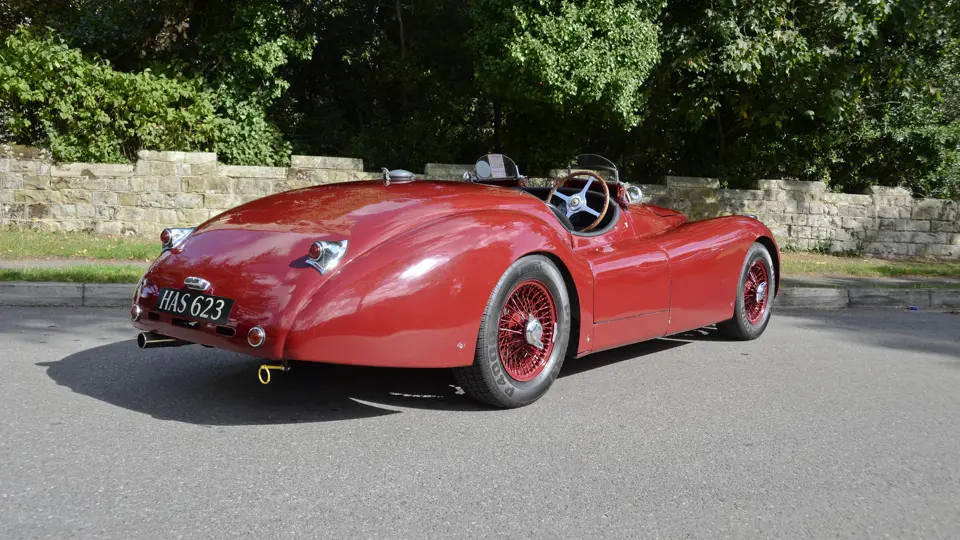

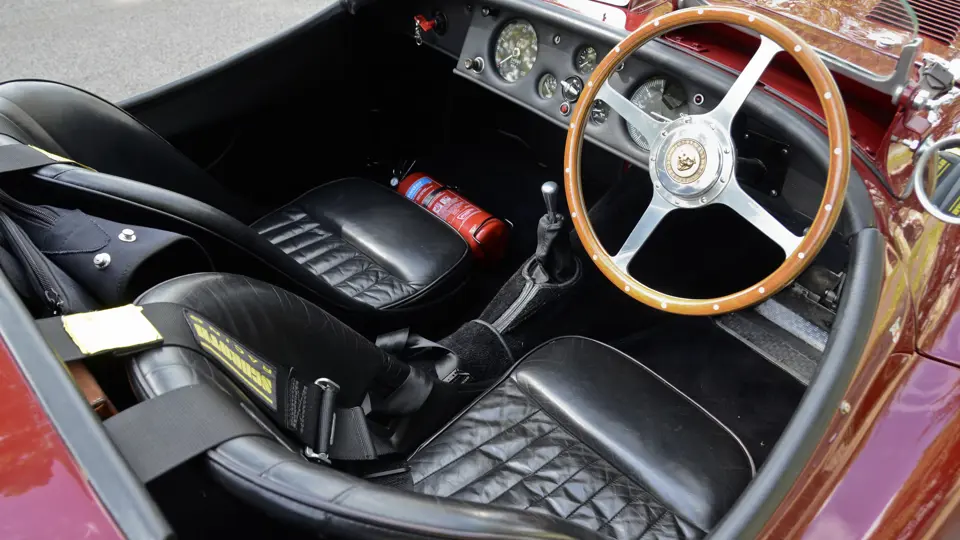

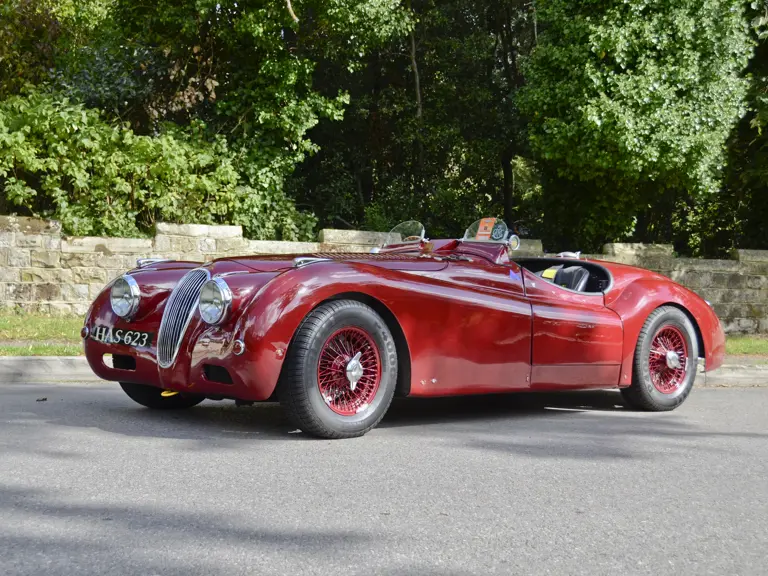
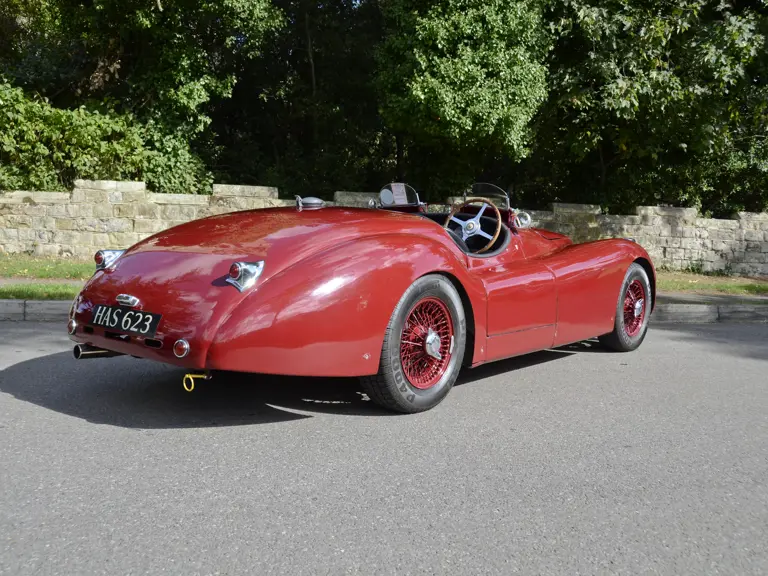

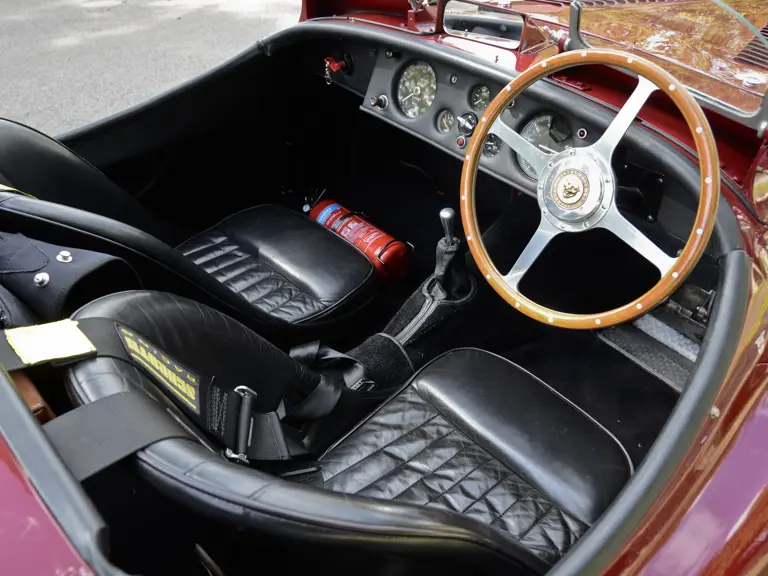
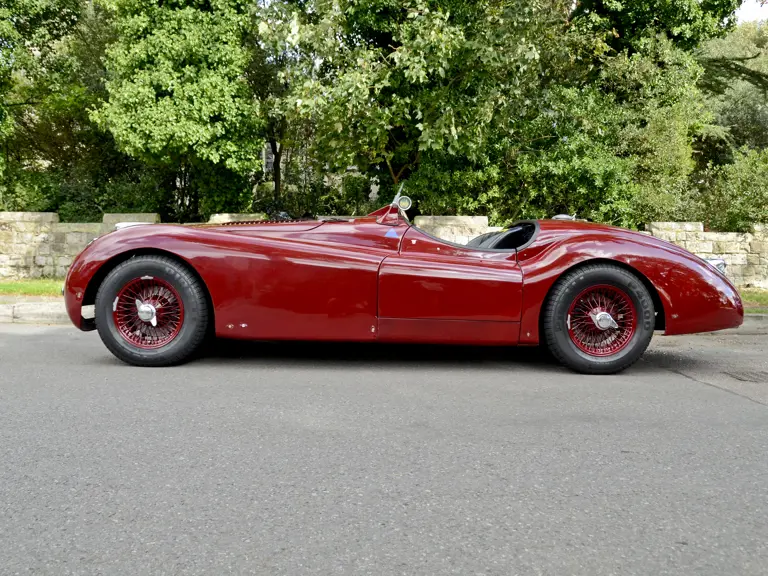
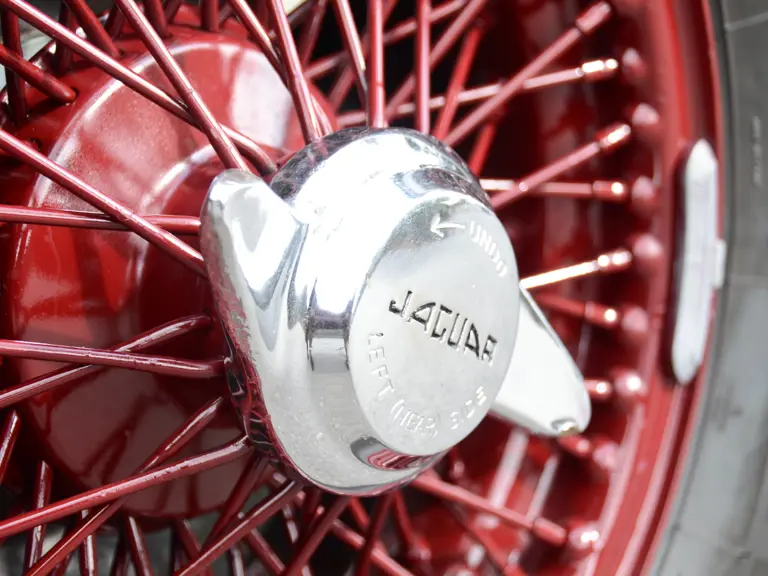
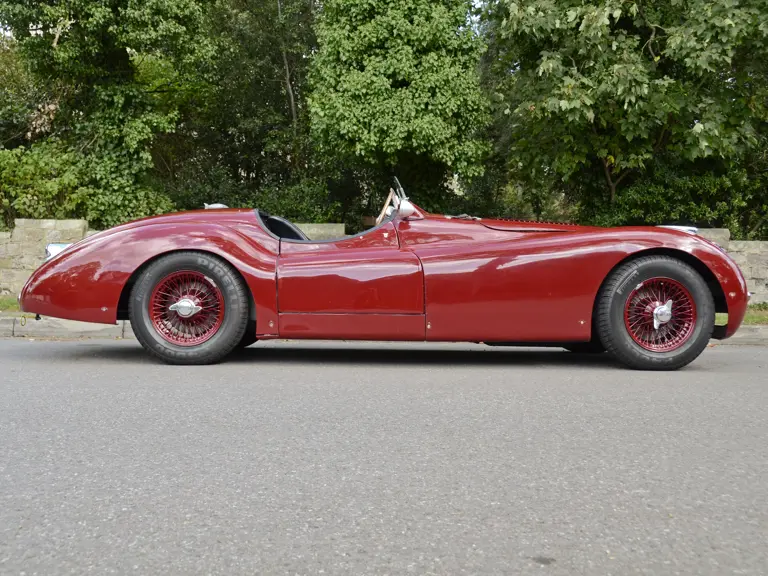
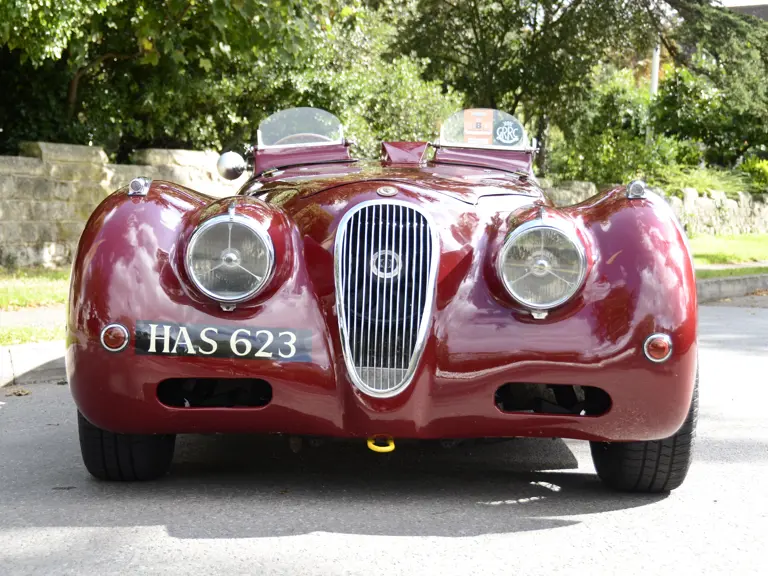
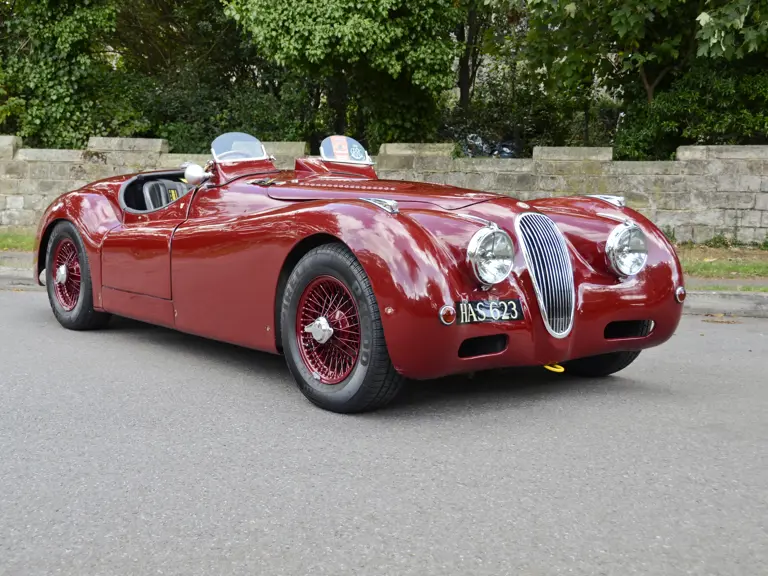
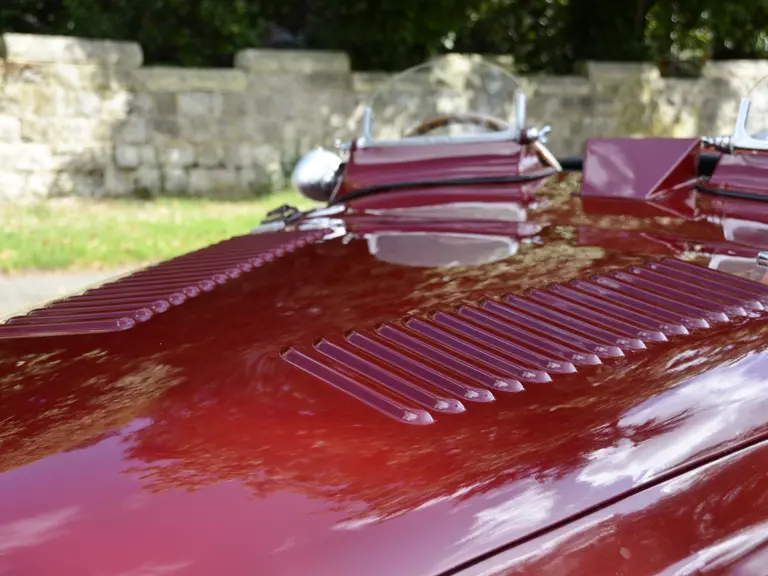
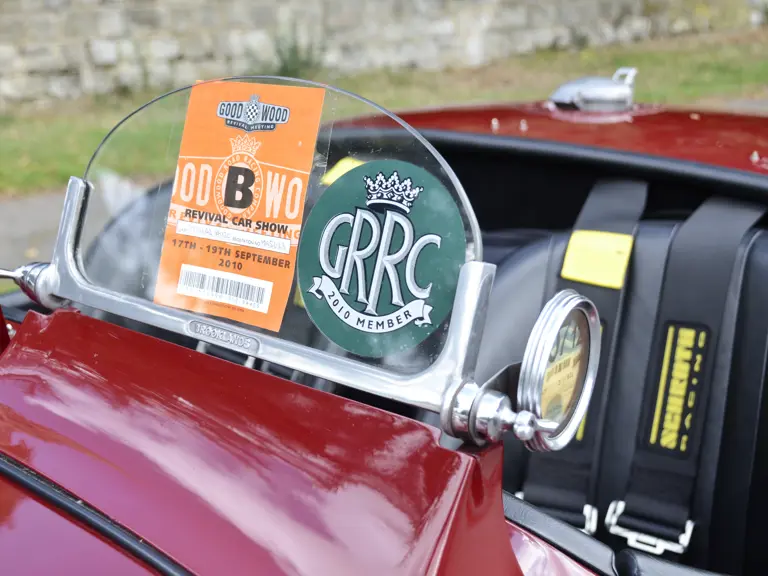

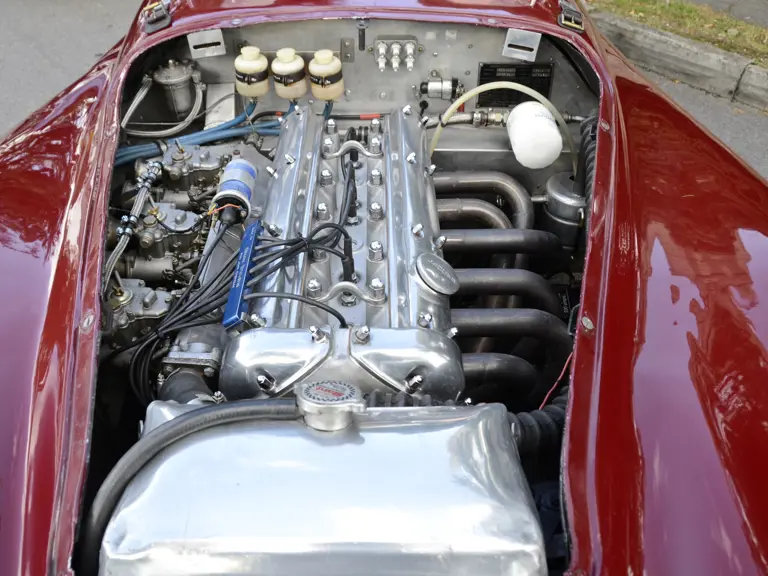
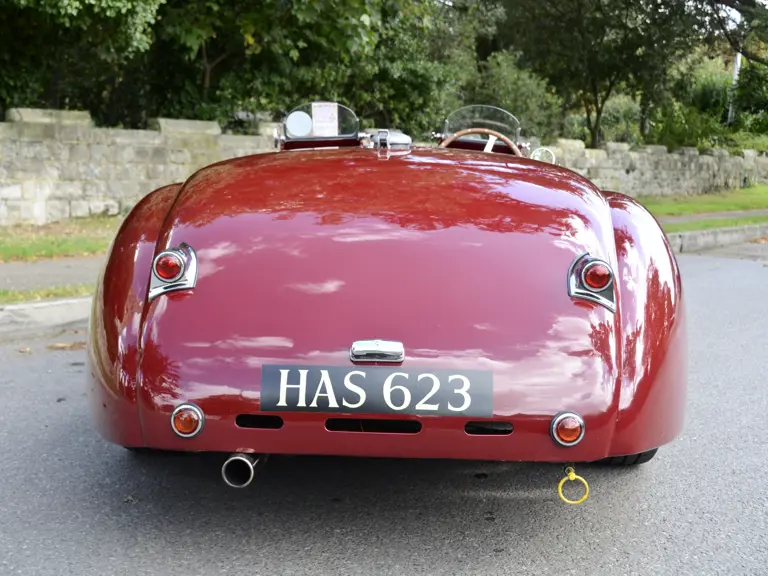
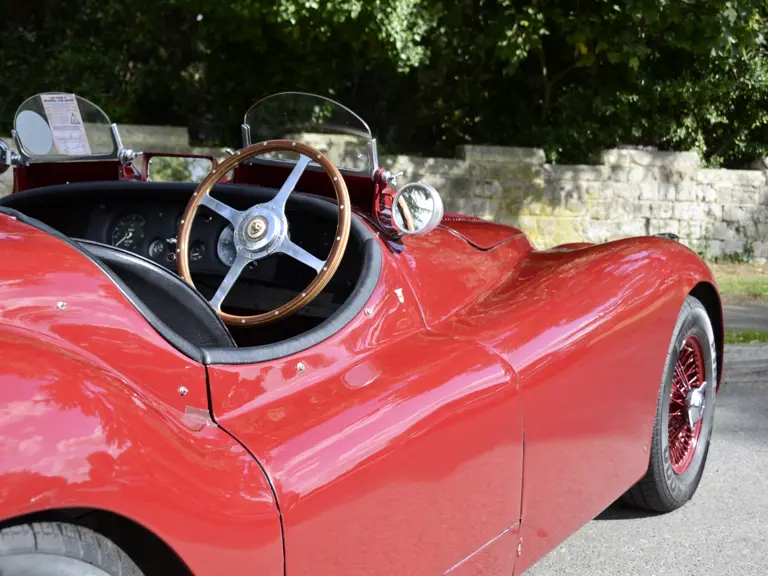

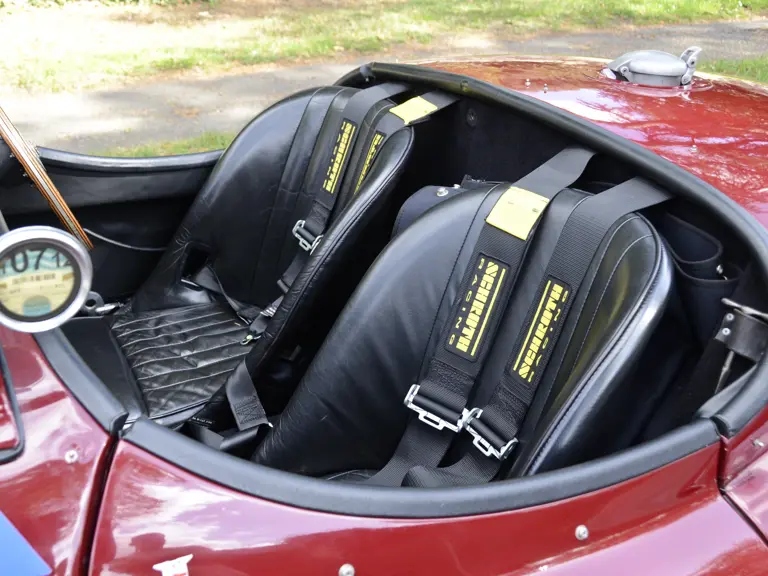
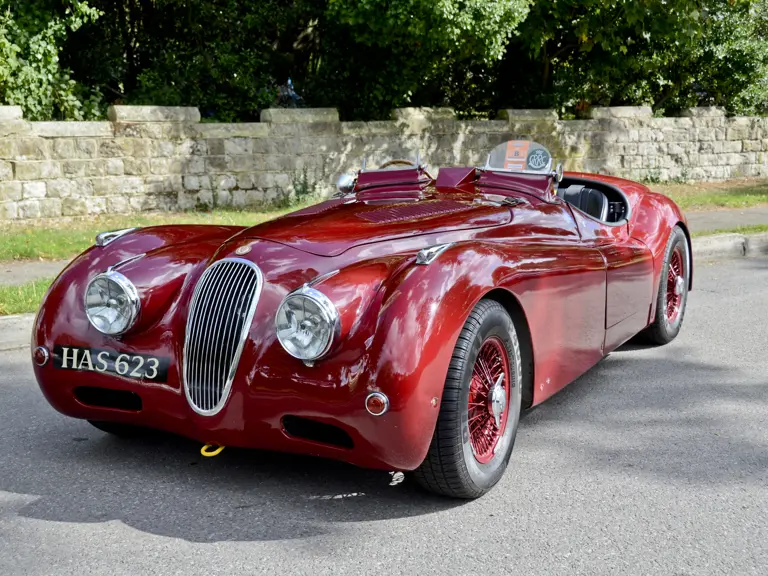
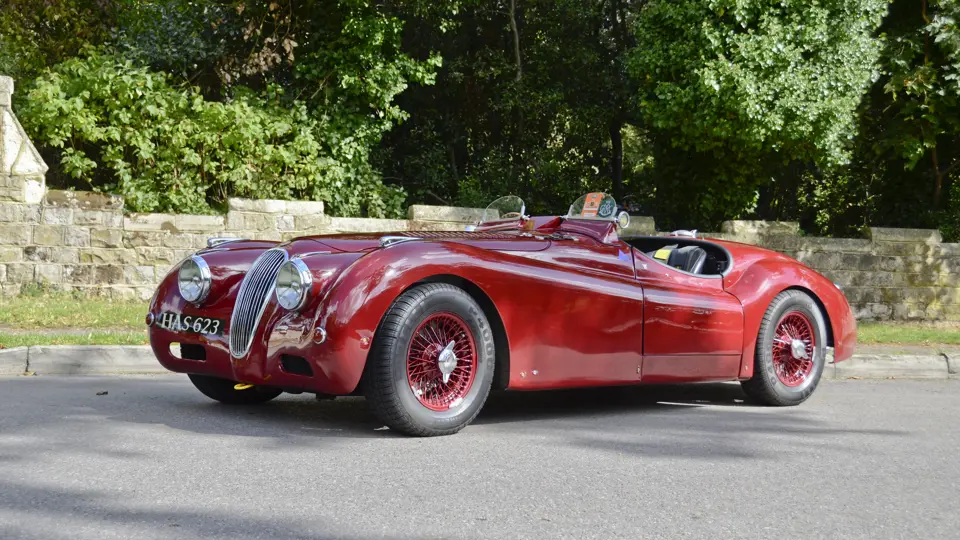
 | London, United Kingdom
| London, United Kingdom
